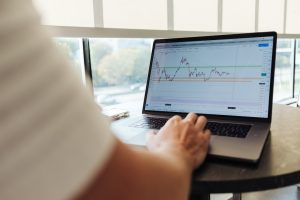Forex, or foreign exchange, is the largest financial market in the world. It involves the buying and selling of currencies from different countries. The value of a currency is constantly changing, which creates opportunities for traders to make a profit by buying and selling at the right time. However, knowing when to buy and sell currency in forex can be a tricky process. In this article, we will explore the factors that influence currency movements and provide some tips on how to determine when to buy and sell.
Factors that Affect Currency Movements
There are several factors that can influence currency movements, including:
1. Economic Data: Economic data such as GDP, inflation, and employment figures can have a significant impact on the value of a currency. Positive economic data can increase demand for a currency, while negative data can lead to a decline in value.
2. Geopolitical Events: Geopolitical events such as elections, wars, and natural disasters can also have an impact on currency movements. These events can create uncertainty and volatility in the markets, leading to fluctuations in currency prices.
3. Central Bank Policy: The policies of central banks, such as interest rate decisions and quantitative easing programs, can also affect currency values. Higher interest rates can increase demand for a currency, while quantitative easing can lead to a decline in value.
4. Market Sentiment: Market sentiment, or the overall mood of traders and investors, can also influence currency movements. Positive sentiment can lead to an increase in demand for a currency, while negative sentiment can lead to a decline in value.
When to Buy Currency in Forex
Buying a currency in forex involves purchasing it with another currency in the hope that its value will increase. Here are some factors to consider when deciding when to buy currency:
1. Positive Economic Data: Positive economic data such as strong GDP growth, low unemployment, and low inflation can increase demand for a currency, leading to an increase in value.
2. Central Bank Policy: If a central bank raises interest rates or implements other policies that are viewed as positive for the economy, it can lead to an increase in demand for the currency.
3. Technical Analysis: Technical analysis involves analyzing charts and patterns to identify trends in currency prices. If a currency is in an uptrend, it may be a good time to buy.
4. Market Sentiment: Positive market sentiment can lead to an increase in demand for a currency, which can lead to an increase in value. Traders can monitor news and social media to gauge market sentiment.
When to Sell Currency in Forex
Selling a currency in forex involves exchanging it for another currency in the hope that its value will decrease. Here are some factors to consider when deciding when to sell currency:
1. Negative Economic Data: Negative economic data such as weak GDP growth, high unemployment, and high inflation can lead to a decrease in demand for a currency, leading to a decrease in value.
2. Central Bank Policy: If a central bank lowers interest rates or implements other policies that are viewed as negative for the economy, it can lead to a decrease in demand for the currency.
3. Technical Analysis: If a currency is in a downtrend, it may be a good time to sell. Traders can use technical analysis to identify patterns and support and resistance levels.
4. Market Sentiment: Negative market sentiment can lead to a decrease in demand for a currency, which can lead to a decrease in value. Traders can monitor news and social media to gauge market sentiment.
Tips for Buying and Selling Currency in Forex
Here are some tips for buying and selling currency in forex:
1. Use Stop Loss Orders: A stop loss order is a tool that can help limit potential losses. Traders can set a stop loss order at a certain price, and if the price reaches that level, the order will be executed, limiting the trader’s losses.
2. Use Leverage with Caution: Leverage can amplify profits, but it can also amplify losses. Traders should use leverage with caution and always have a risk management plan in place.
3. Monitor Economic Data and News: Traders should stay up-to-date on economic data and news that could impact currency movements. This can help them make informed decisions about when to buy and sell.
4. Use Technical Analysis: Technical analysis can help traders identify trends and support and resistance levels, which can be useful in determining when to buy and sell.
Conclusion
Knowing when to buy and sell currency in forex can be difficult, but by considering economic data, central bank policy, market sentiment, and technical analysis, traders can make informed decisions. Traders should also use risk management tools such as stop loss orders and use leverage with caution. By following these tips, traders can increase their chances of success in the forex market.






